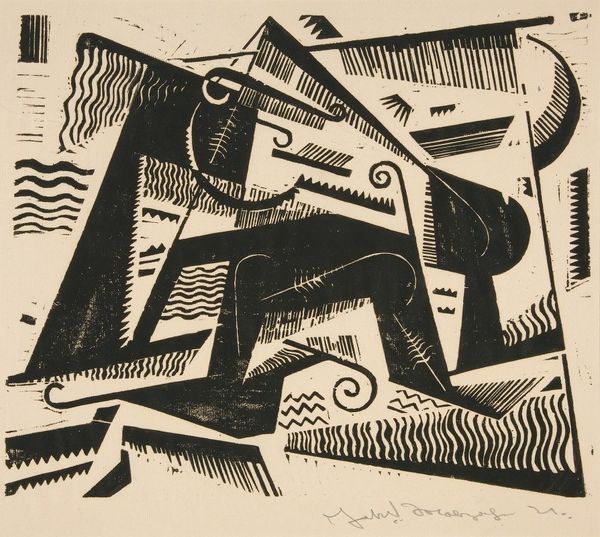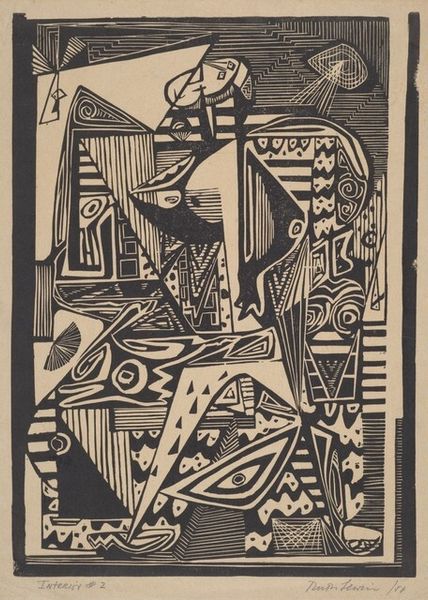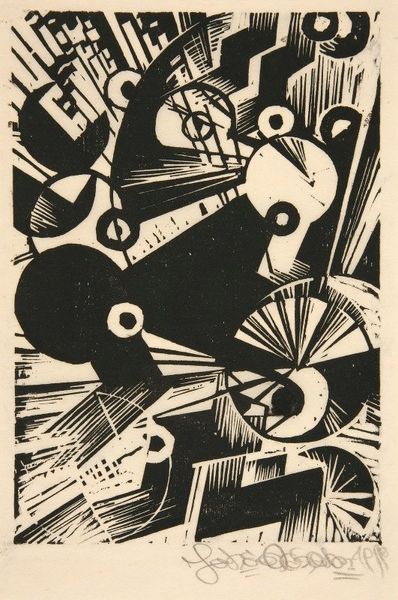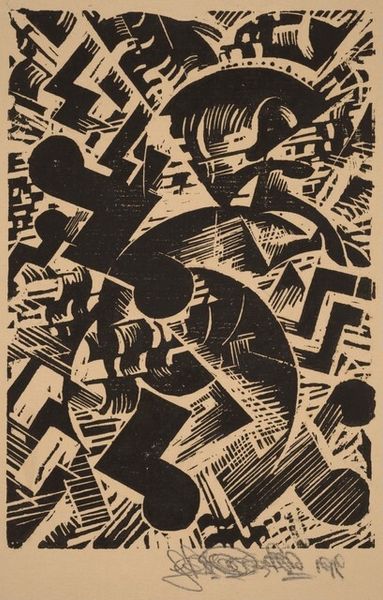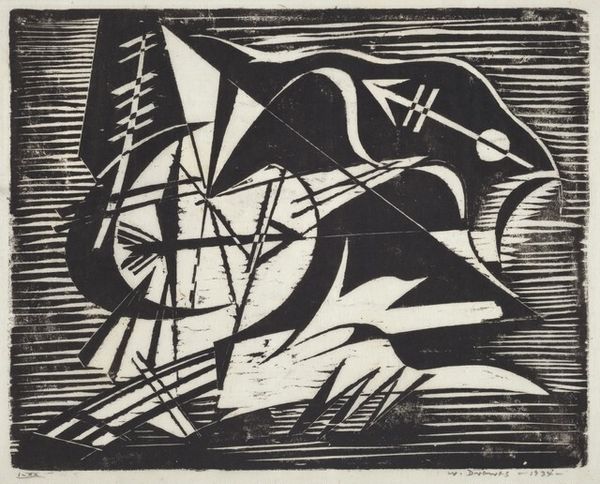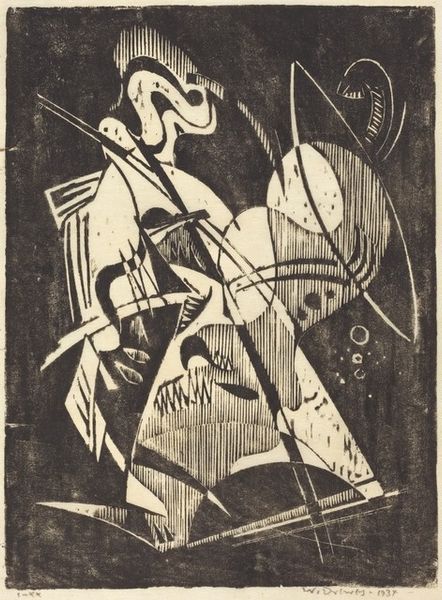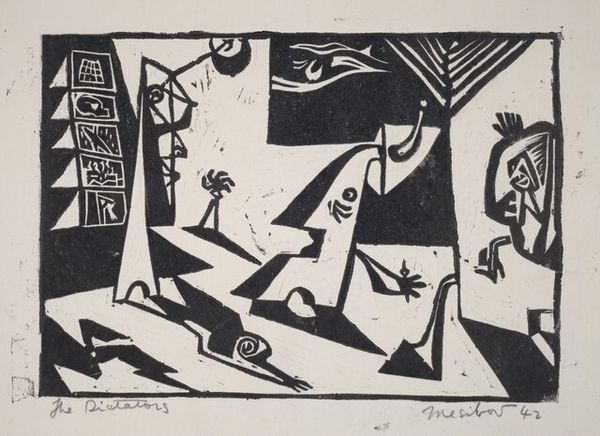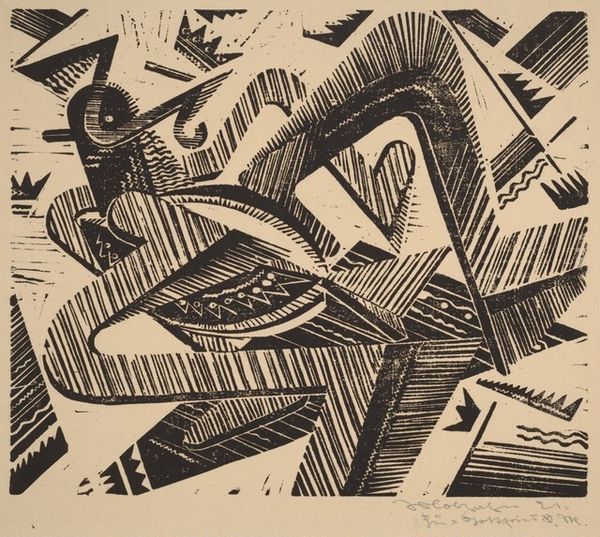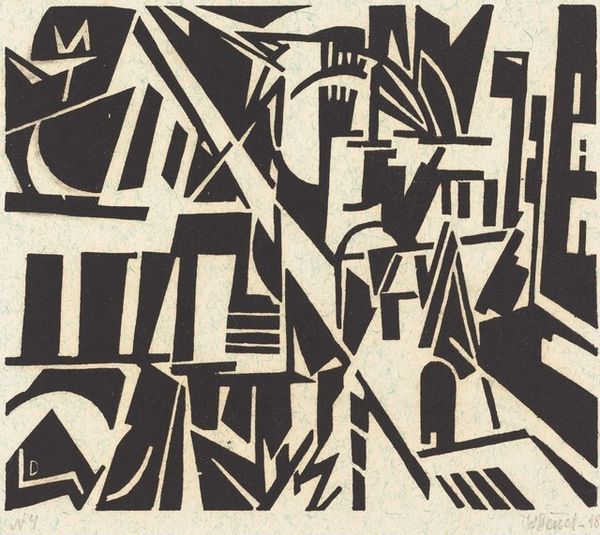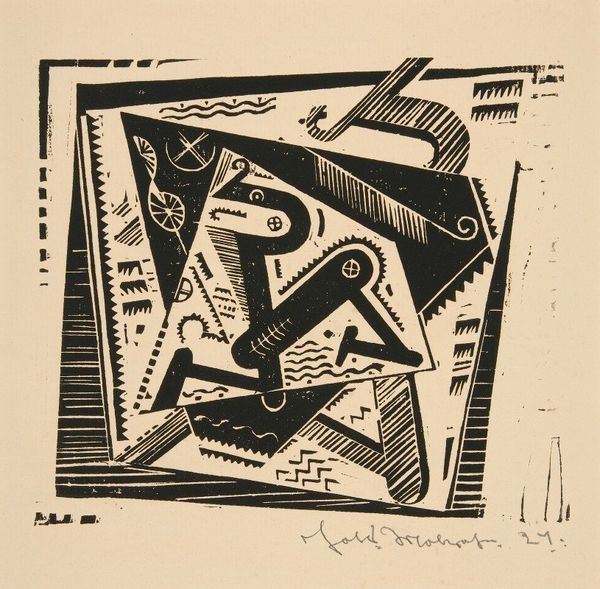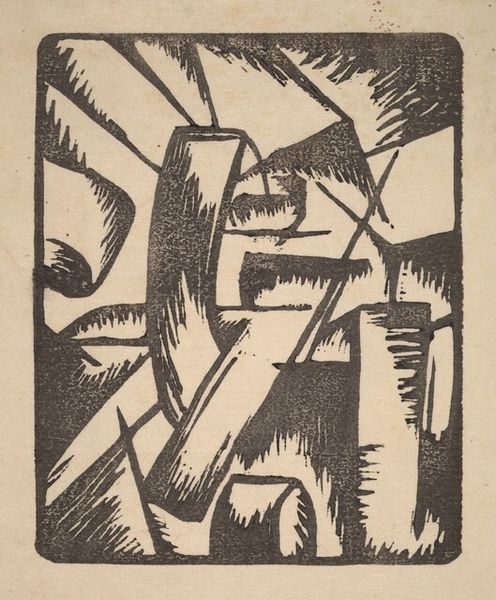
graphic-art, print, woodcut
#
abstract-expressionism
#
graphic-art
# print
#
form
#
geometric
#
woodcut
#
abstraction
#
modernism
Dimensions: block: 253 x 344 mm sheet: 305 x 456 mm
Copyright: National Gallery of Art: CC0 1.0
Editor: Here we have Louis Schanker’s "Forms in Action" from 1941, a woodcut print in black and white. It strikes me as dynamic, almost aggressive, in its stark contrasts and fragmented forms. How do you interpret the arrangement of shapes within this composition? Curator: The power of this work lies in its deliberate formalism. Note how Schanker utilizes geometric abstraction—triangles, rectangles, and intersecting lines—to convey a sense of movement and tension. The absence of representational figures forces us to consider the relationship between positive and negative space, figure and ground. Does the interaction of shapes remind you of other art movements from the early 20th century? Editor: I see echoes of Cubism and perhaps even some Futurism in the depiction of motion. But the heavy blacks of the woodcut lend a very different feel. Curator: Precisely. Schanker’s choice of woodcut amplifies the work's forceful quality. The stark contrast inherent in the medium reinforces the dynamic interplay of shapes, creating a visual rhythm that engages the viewer. Consider the texture as well. What effect does it have on your perception? Editor: It adds a sense of roughness and immediacy, quite unlike the polished surfaces we often associate with modernism. Curator: Agreed. It invites us to think about the materiality of the print itself and the artist's process. By focusing on these elements, the raw energy becomes palpable. Editor: This emphasis on form and process gives me a new appreciation for abstract art. Thank you. Curator: Indeed, and studying how artists engage with medium enriches our understanding of their intention and of the work’s aesthetic impact.
Comments
No comments
Be the first to comment and join the conversation on the ultimate creative platform.
